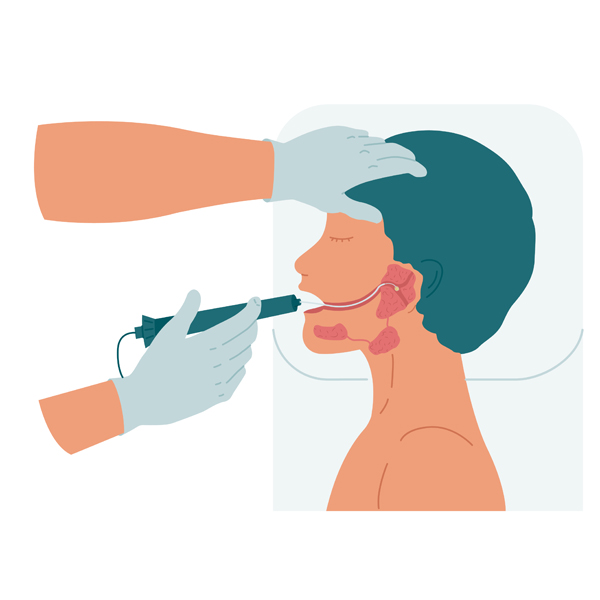Sialendoscopy
Overview
At Indotaj Medical Center, sialendoscopy is a specialized procedure offered to address issues related to the salivary glands. Sialendoscopy involves the use of a thin, flexible endoscope to visualize and treat various conditions affecting the salivary ducts and glands. This minimally invasive technique allows for both diagnostic evaluation and therapeutic interventions within the salivary system.
At Indotaj Medical Center, we prioritize patient care and utilize advanced techniques like sialendoscopy to provide precise and effective solutions for salivary gland disorders. Our multidisciplinary team is dedicated to ensuring the well-being and comfort of our patients throughout their diagnostic and treatment journey.

Why it's done
Sialendoscopy treatment may be recommended for several reasons, including:
- Sialendoscopy is frequently used to diagnose and treat salivary duct stones. The procedure allows for the direct visualization and removal of stones that may be causing obstruction, swelling, and pain within the salivary ducts.
- Narrowing or strictures in the salivary ducts can impede the normal flow of saliva. Sialendoscopy enables the identification and treatment of these conditions, often through dilation of the duct to restore proper function.
- Chronic inflammation of the salivary glands, known as chronic sialadenitis, can cause recurrent swelling, pain, and discomfort. Sialendoscopy is used to evaluate and treat the underlying causes of chronic inflammation, improving gland function.
- In cases of chronic infections affecting the salivary glands, sialendoscopy allows for targeted interventions to remove infected material and alleviate symptoms.
- Sialendoscopy may be utilized to perform targeted biopsies of suspicious lesions or abnormalities within the salivary glands. This can aid in the diagnosis of potential tumors or other pathological conditions.
- Sialendoscopy is employed to evaluate the overall health and function of the salivary glands. It can identify structural abnormalities, assess glandular ductal systems, and guide appropriate treatment strategies.
- Individuals experiencing recurrent swelling, pain, or discomfort related to the salivary glands may undergo sialendoscopy to identify and address the underlying issues causing these symptoms.
- Sialendoscopy is designed to preserve the normal function of the salivary glands while effectively managing disorders. It offers a minimally invasive alternative to traditional surgical approaches.
Risk
Sialendoscopy treatment, can pose potential risks and complications. Some of these include:
- Bleeding
- Infection
- Swelling
- Salivary Duct Injury
- Reaction to Anesthesia
- Pain or Discomfort
- Changes in Taste
- Incomplete Stone Removal
- Scarring
- Allergic Reactions
- Regrowth of Salivary Stones
- Persistent Symptoms
How do I get ready for Sialendoscopy treatment?
Preparing for Sialendoscopy treatment involves several steps to ensure a smooth procedure and recovery:
- Schedule a consultation with an ear, nose, and throat (ENT) specialist to discuss your symptoms, medical history, and the need for sialendoscopy. This initial evaluation will help determine the appropriateness of the procedure for your specific case.
- Provide a comprehensive medical history, including any pre-existing conditions, allergies, and medications you are currently taking. Inform your healthcare team about any over-the-counter or herbal supplements.
- Undergo any necessary diagnostic tests, such as imaging studies or blood tests, to assess the condition of your salivary glands and aid in treatment planning.
- Engage in discussions with your healthcare team to understand the sialendoscopy procedure, including the expected benefits, risks, and potential outcomes. Ask any questions you may have about the process.
- If anesthesia is required for the procedure, schedule a consultation with the anesthesia team to discuss your medical history, any previous experiences with anesthesia, and address any concerns. Follow any fasting instructions provided by the healthcare team.
- Follow any preoperative instructions provided by your healthcare team. This may include instructions related to fasting, medications, and other guidelines to ensure a safe and effective procedure.


